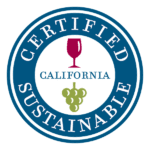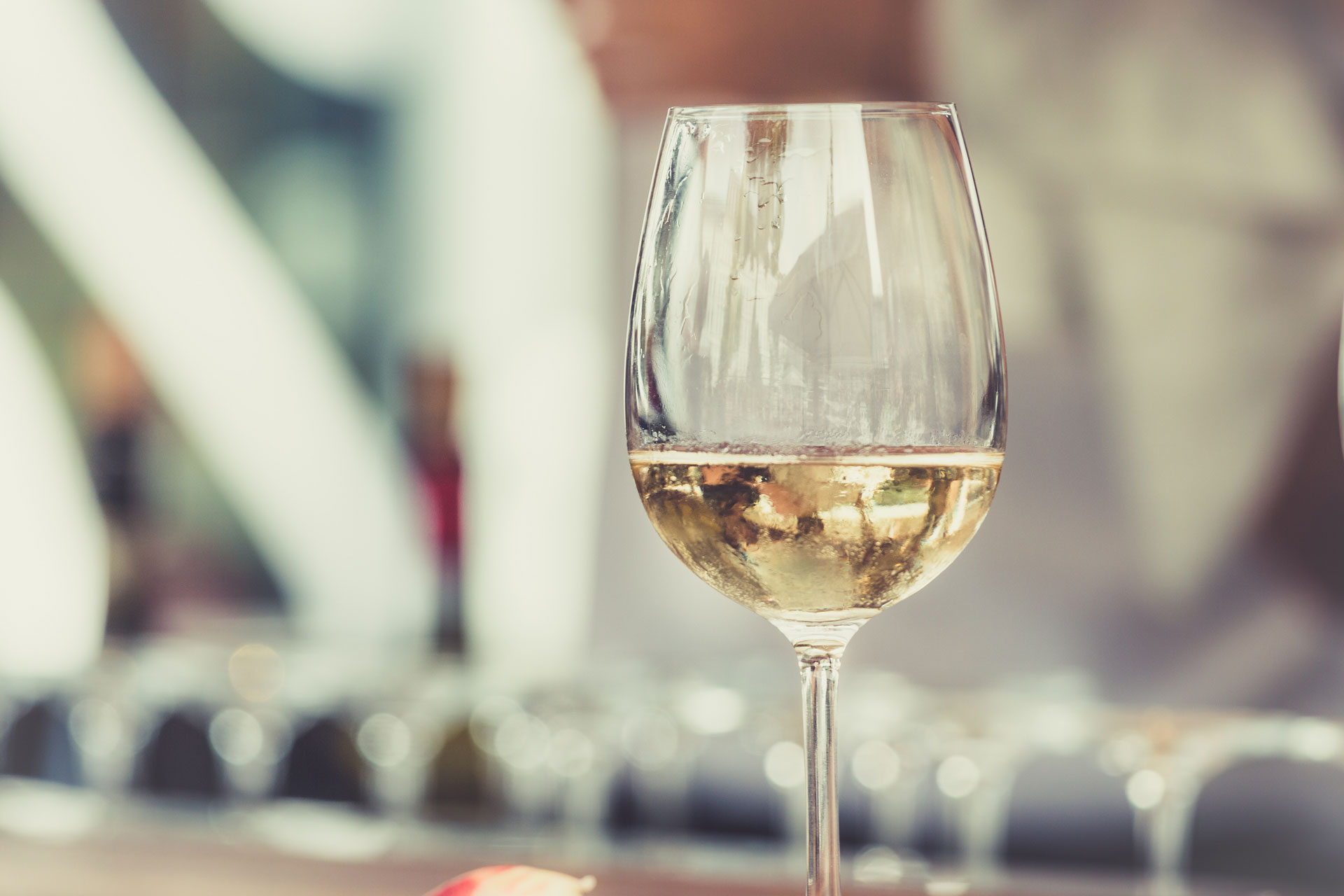Wine Label Guide: Natural, Biodynamic, Organic and More
Natural wine. Organic wine. Biodynamic wine. You’ve heard about them, read about them, maybe even tried some. But what exactly are they and how do they differ from conventional wines?
As the good food movement expands to vine to table, more and more people are questioning how their wine is produced, and are seeking out sustainable options. Global sales of organic wines grew from 349 million bottles sold in 2012 to 676 million bottles in 2017. But what makes a wine organic? And what about the other sustainability-focused labels you see at the store?
Here’s what you need to know about the various “green” wine terms, both for U.S.-produced wines and the foreign wines you’ll find at your local market. We’ll also help you figure out how to purchase bottles that help increase biodiversity — and explain why that matters.
Jump to a Wine Label
Organic wine

As with certified organic food, certified organic wine refers to wine made using organic principles, including grapes grown without chemicals and pesticides, and free from the sewage sludge present in some fertilizers.
But exactly what certified organic wine actually means depends on where the wine is being produced — and therefore where it is certified. U.S. organic standards (overseen by the U.S. Department of Agriculture) allow for the use of some naturally based pesticides and a few synthetic ones that meet a strict set of regulations. It does not allow for any sulfites (which keep wine from oxidizing, helping to preserve its flavor) to be added. French standards (designated on wine bottles with a green-white logo of “AB – agriculture biologique”) don’t allow for any use of synthetic pesticides but allow for the possibility of some added sulfites. These two sets of standards both differ from Chilean organic standards … and on and on.
In the U.S. it’s also common to see bottles labeled “Made with Organic Grapes,” meaning the grapes used to produce the wine were grown organically; however, the wine as a whole cannot be USDA-certified organic because it includes additives such as Mega Purple or sulfites.
Takeaway: Organic wine is often easier to find than biodynamic or natural wines (more on these below). And due to strict certification processes, the labels offer a clear picture of what’s within.
Biodynamic wine

Developed by Austrian Rudolf Steiner in the 1920s, biodynamic farming is a holistic practice that considers the entire ecosystem instead of simply the end product. As with organic farming, grapes are grown without pesticides and other chemicals. But where a lot of farming practices (sometimes including organic) can degrade the soil, biodynamic farming focuses not only on healthy grapes but also healthy soil (as well as other plants and livestock). There’s also an aspect of biodynamic farming that incorporates the cosmos, linking practices like soil treatments, vine pruning and grape harvesting to the lunar calendar. As with organic wine, vineyards that use biodynamic practices are not all certified as such, and if you’re interested in wine produced in this way your best bet is to ask your local wine shops for recommendations. A certified biodynamic wine is usually certified by Demeter International — or for U.S.-based wines, Demeter USA, both of which have lists of certified wines on their websites.
Takeaway: Certified biodynamic wines can be hard to find (as of 2024 only 1,439 wineries were certified), but if you do find one, you can be sure that the biodynamic winemakers paid deep attention to the well-being of the planet.
Natural wine
Generally speaking, “natural wine” refers to wine produced with little to no intervention. This means that natural winemakers practice organic or biodynamic farming methods: The wine is produced by hand (picking of grapes, destemming and juicing) and makers add no chemicals, sulfur or commercial yeasts in the process. By and large, you can taste the results of these production choices in the funky and earthy flavor profile of the wines.
Natural wine is having a moment but the phrase can refer to multiple grape growing practices and has no universal definition, with a few organizations offering their own standards and certifications (some natural winemakers actually balk at the idea of the label becoming official). Often the word “natural” on a food label doesn’t carry much meaning, but when it comes to wine, it may be a different story.
Takeaway: There is no official certification for these wines but it is common to see bottles labeled “natural wine.” These funky, interesting wines are worth a try but in order to learn about the farming and production methods, it’s best to ask the winemaker (if possible) or someone knowledgeable at your local wine shop.
Sustainable wine


Another broad phrase, sustainable wine loosely means wine produced in a way that is good for you, the environment, the farmer and farm workers but there is no one definition or certification process. It can refer to grapes farmed organically, biodynamically or even conventionally, or could mean the vineyard has a focus on renewable resources or water conservation or uses recycled glassware. The California Sustainable Winegrowing Alliance, for instance, offers a sustainable certification that has allowed the use of the pesticide Roundup; its certification requirements differ from other U.S.-based ones including the Long Island Sustainable Winegrowers, and so on.
Takeaway: While these wines encompass a wide range of farming practices, their producers are aware of and trying to mitigate some of the effects of agriculture on the planet. Those interested in these wines should look to the different sustainable alliances to find out exactly how they were produced.
Other wine label terms to know
Vegan
Many wineries use animal ingredients such as egg whites, animal milk proteins, gelatins made from cows or pigs, or isinglass made from fish to help speed up the practice of filtering out sediment from grapes. Since there are no vegan wine certifications, with wines marketed as “vegan,” the consumer is trusting that the wines were made without the use of animal products. Websites including Vegan.com, Barnivore, and VegNews, have regularly updated lists of both vegan wine brands and specific bottles.
Fair trade
Fair trade labels are designed to ensure that workers and owners throughout the supply chain are compensated fairly and earn a living wage. There are some concerns about how well the products’ labor standards are verified, but they do guarantee winemakers a minimum price for their products, something that helps them maintain better standards for workers and the environment. Of the two major fair trade labels active in the U.S., only Fairtrade International currently certifies wines.
No sulfites added
A small amount of sulfites appear naturally during the fermentation process but many winemakers will add extra sulfites to help prevent oxidation, which can cause the wine to go bad. While a tiny portion of the population is sensitive to sulfites (the FDA estimates less than 1 percent), there are no other documented health risks associated with sulfites and they’re common in many other foods including dried fruits and even frozen pizza. In the U.S., the USDA organic seal guarantees that the wine does not contain any additional sulfates.
Beyond the labels: Why varietals matter
Chances are you’ve heard of Cabernet Sauvignon, Merlot and Sauvignon Blanc but what about Saperavi or Cayuga? There are more than 10,000 wine grape “varietals” but the 10 most popular ones make up 41 percent of the wine produced. For the adventurous wine drinker, branching out could mean not only discovering a new favorite wine, but helping to increase biodiversity and reduce the need for pesticides.
“We’ve prevented the famous wine grapes from naturally evolving, because they are reproduced by cuttings,” says Kevin Begos, author of the book “Tasting the Past.” “That means pests and bugs keep figuring out new ways to attack vines, but those grapes are genetically frozen in time. End result: We need more and more pesticides to fight the bugs, and those grapes are more and more at risk of a global pandemic, like what hit Irish potatoes and what wiped out the leading banana variety in the 1950s.”
The solution could be to expand the market for different and new varieties. In New York, for instance, one of the reasons it’s hard to produce organic or biodynamic wine of the current popular varieties is because of the state’s climate. The humidity makes it easier for pests and diseases to attack grapes like Cabernet Sauvignon than in California or Oregon.
“We are trying [to develop] new varieties that have better disease control and could reduce the pesticide use but the challenge has been getting them to market,” says Hans Walter-Peterson of Cornell Cooperative Extension’s Finger Lakes Grape Program. If wine drinkers don’t buy the unusual varieties — if they always seek out Cabernet — then there’s not much incentive for growers to try something new, even if it’s something that would do well on their land and decrease their need for pesticides.
So what wines should you look for at the store?
For anyone looking to be more “green” in their wine drinking, talking to the staff at your local wine shop is one of the best places to start. While some bricks-and-mortar stores and niche online retailers stock a selection of sustainable, organic and biodynamic wines, at others you might have to look a bit harder. And sometimes the size of the vineyard tells you some of what you want to know, so ask someone at the shop about the size of the vineyard and their yearly production.
“While there are some big places doing it well, if you’re buying from a winery that is family owned and operated, they’re more likely to be living among the vines, and you’re going to get a wine with less of an environmental impact,” says Jeff Harding, former wine director at the Waverly Inn.
Natural, organic, sustainable and biodynamic wines each have their pros and cons even before you consider how far they travel to get to your table, and other environmental factors such as what glassware was used for the bottle or the impacts of other types of packaging. Given how complicated it can be, we recommend starting with the terminology we gave you above and looking for those labels and terms. Start by looking for a “natural or organic” section of the wine shop or asking an expert at the store to recommend a bottle by telling them your preferences.
More Reading
Learn how to read food labels with our short Label Literacy course
May 15, 2025
When "Made in America" isn't really: Country-of-origin labeling for beef
May 8, 2025
Can the FDA's new rules help people eat healthier?
March 19, 2025
MSG – a vegan pantry essential – makes a comeback
February 27, 2025
Dr. Bronner’s dumped its B Corp certification. Was it the right move?
February 21, 2025
Can climate-friendly food labels transform eaters into environmentalists?
February 18, 2025
Finding a pet food that aligns with your values
February 11, 2025
Busting common myths about organic food
December 23, 2024
The USDA updated label guidelines to increase transparency — is it enough?
September 12, 2024
Cooking oils and sustainability
July 26, 2024


